Greenwood Cemetery
Aspire Pavers Helps To Restore and Preserve St. Louis’ African American heritage
It was nearly a decade ago when Missouri resident Raphael Morris first learned that the headstones were disappearing.
Located on the outskirts of St. Louis County in the village of Hillsdale, Greenwood Cemetery has the distinction of being the first commercial nonsectarian burial ground for African Americans in the St. Louis metropolitan area. Established in 1874, Greenwood was intended from its inception to serve the black community, evidencing the post-Civil War trend toward segregation in all aspects of life and death.
The cemetery was known for its beautiful park-like setting, with rolling hills and winding paths that wove throughout its nearly 32 acres. As ownership of the property changed hands over the years, the grounds were nevertheless carefully maintained. However, near the turn of the twentieth century, Greenwood’s then-owner became financially unable to continue its upkeep. Eventually, the cemetery was abandoned.
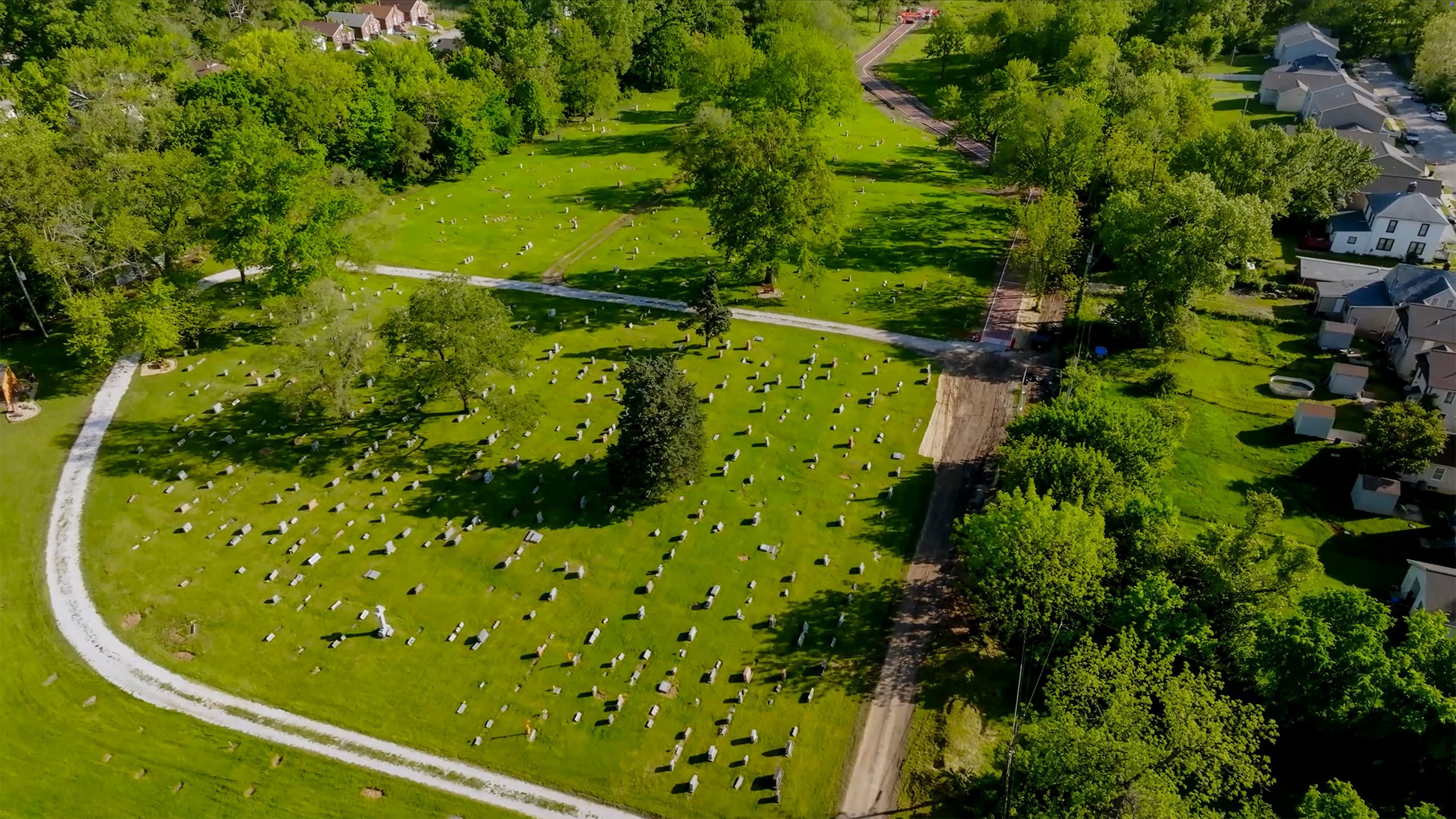
Both Morris and his wife, Shelley, have numerous family members buried at Greenwood, and it had been a long time since either had visited. So it was that in 2015, upon hearing a local business owner complain quite vociferously about the cemetery having become such an eyesore, Morris decided to take a look for himself.
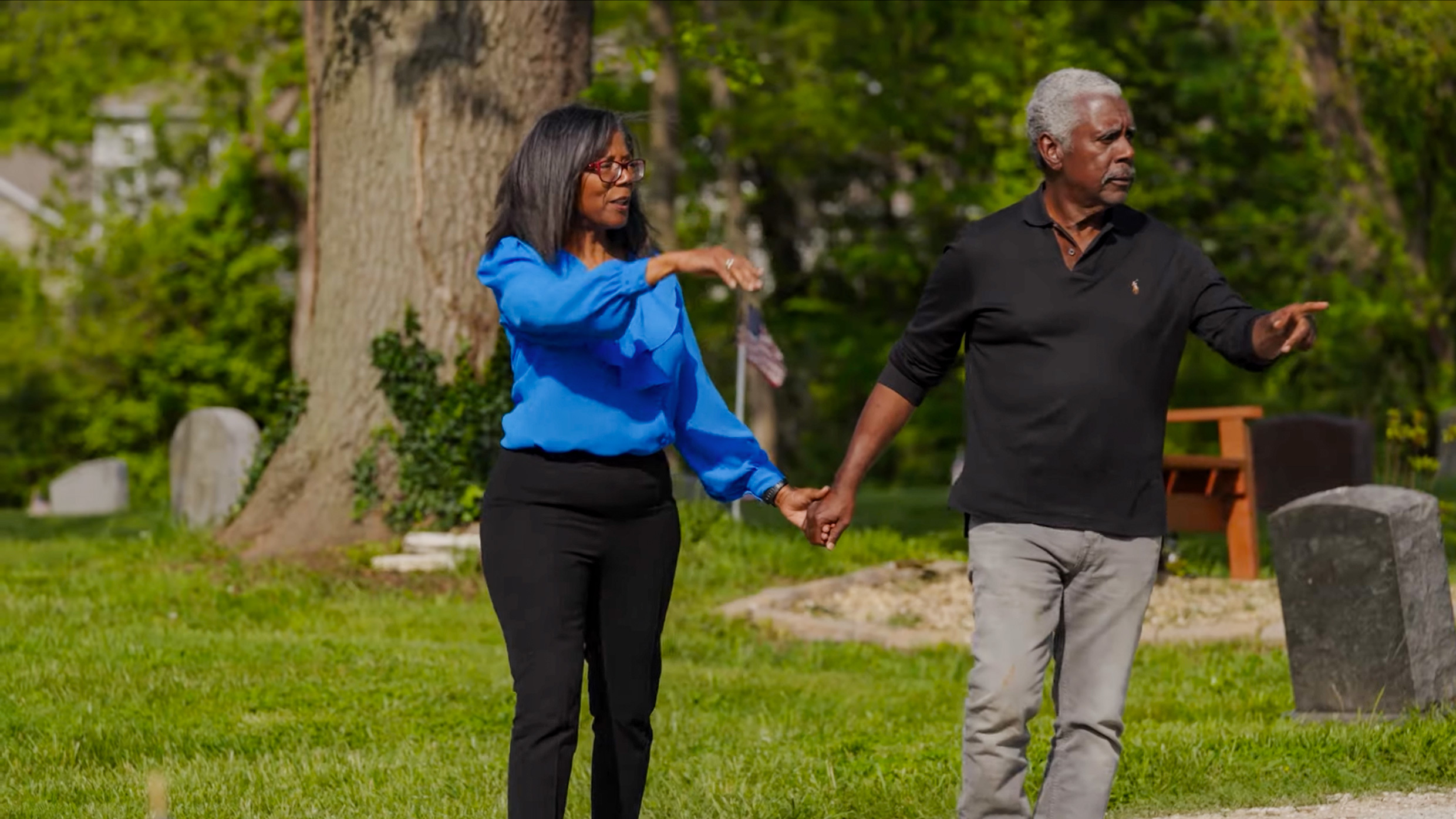
What he saw hit him hard. Greenwood’s once picturesque grounds had been rendered practically unrecognizable from decades of profound neglect. Paths were nearly indiscernible. Fences had broken and fallen apart. Iron surfaces were caked in rust. And the land itself had been thoroughly consumed by immensely overgrown and uncontrolled plant life as far as the eye could see.
Even more distressing, however, were the headstones. While some had managed to remain intact over the years, many others were in extreme states of disrepair as a result of everything from erosion to vandalism. What’s more, the tangled and pervasive growth of weeds, saplings, ivy, brambles, and more had become so tall — in some areas, as much as 15 to 20 feet high — that it was impossible to see a single headstone without fighting through thick vegetation. They had all, in effect, disappeared.
The very next weekend, the Morrises rolled up their sleeves and got their hands dirty — literally — by beginning to clear the invasive brush away themselves, along with a handful of other volunteers. This generous act unwittingly birthed a grassroots movement to restore the land back to its former glory, and give the over 50,000 African Americans laid to rest there the honor and respect they so greatly deserved.
With each day that passed and every headstone or grave marker unearthed, the work became ever more meaningful. Stories of the souls interred at Greenwood were being resurrected and retold by descendants who had joined in the effort. The historical importance of these lives lived, from Buffalo Soldiers and war veterans to environmentalists, educators, activists, and musicians, became illuminated with every patch of land cleared, every resting place found.
Even as progress was being made, there came a day when Morris realized just how much further they still had yet to go. Due to the incredibly poor state of the cemetery’s primary road, many had been finding it immensely difficult to visit the graves. In some cases, Morris came to realize, they couldn’t even reach them at all
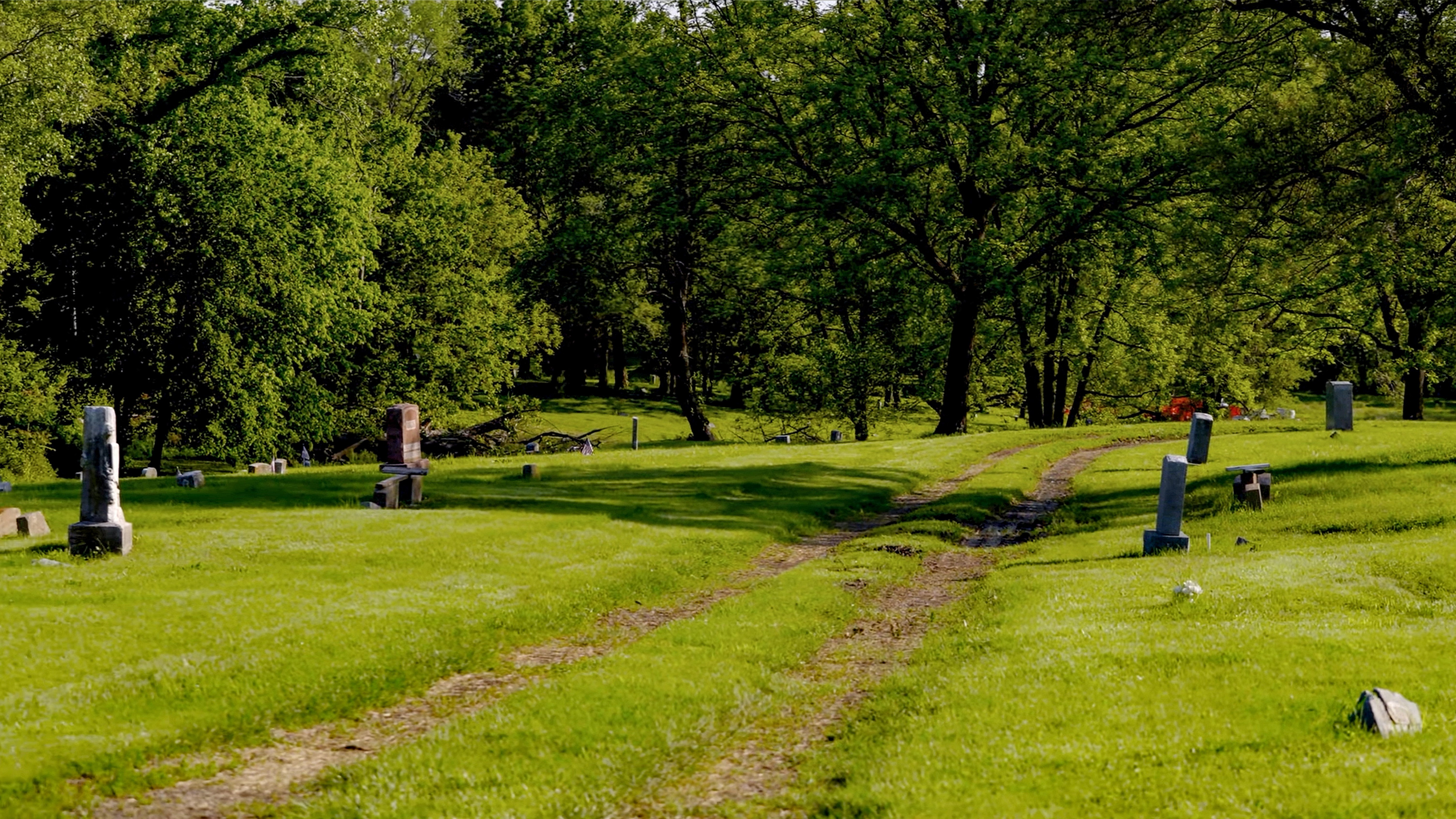
“One of the most heartbreaking things I ever saw,” recalls Mr. Morris, “was a lady walking with her walker down the bottom of that hill, maybe about an 800-foot walk, and it hurt my heart so bad to see her having to do that. When she came back up, I apologized for the cemetery being in that state of disrepair, and I told her, ‘I'm working on this. We're going to get this solved.’”
As word spread about the restoration efforts, more locals volunteered to help. This was a godsend to the Morrises, for Greenwood was going to need all the help it could get.
In addition to the dense overgrowth that blanketed the grounds, debris was everywhere. Trash, tires, even discarded furniture and appliances were scattered throughout. Severe erosion had exposed drainage culverts, dislodged gravestones, and even collapsed vaults. Pathways had fallen victim to encroaching roots and deep ruts. Even so, on most weekends you’d find a small yet undaunted group of individuals toiling away in the scorching St. Louis heat, making slow yet visible progress at removing the years of vegetation that Mother Nature had so willingly supplied.
That was until the following year, when the Morrises realized that restoring Greenwood needed, and deserved, to be a full-time endeavor. Both resigned from their jobs and cofounded the Greenwood Cemetery Preservation Association (GCPA), with Raphael serving as President and Shelley the Secretary and Historian.
It was the spark that lit the flame. The community at large took notice as volunteers of all ages began showing up at the cemetery, from grade school students to retirees. Over time, organizations such as the Missouri Coalition for the Environment and the Missouri Department of Conservation became involved. All were inspired and moved by the couple’s mission to restore the site and preserve its historic and cultural significance.
Yet even with the growing support coming together to tackle Greenwood’s various challenges, the largest problem and most crucial task still lay ahead: the restoration of the cemetery’s main access road.
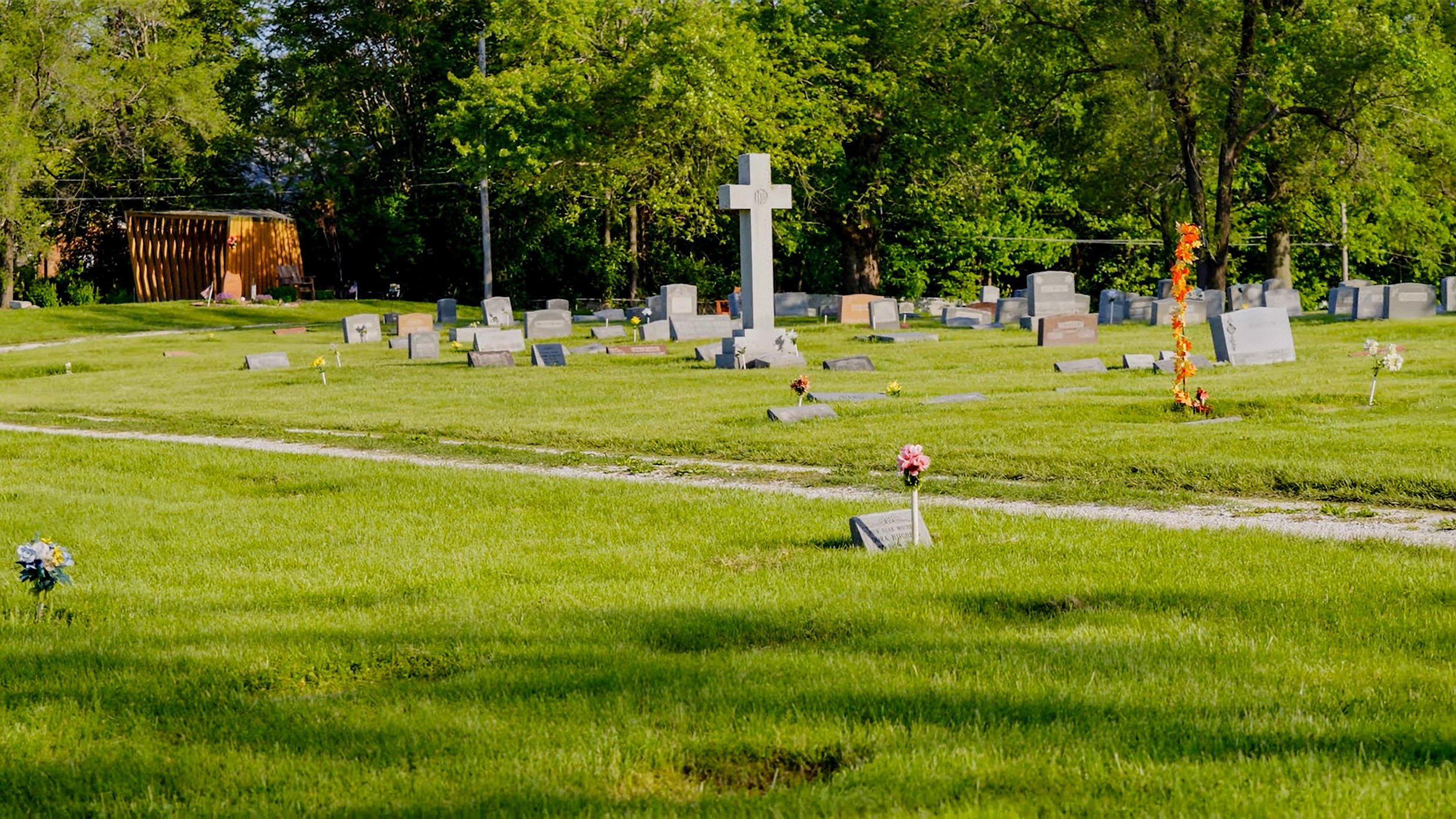
It was generous to even refer to it as a road; every year without fail, heavy rains and lack of proper drainage would wash the lengthy thoroughfare out, making it completely impassable. Visitors intending to reach the bottom of the cemetery’s hill had no choice but to park their cars and walk the rest of the way. And as the majority of those who visit Greenwood are seniors, the situation made it nigh impossible for them to reach the graves of their loved ones. Without this vital piece of infrastructure, the GCPA’s mission had no chance of succeeding.
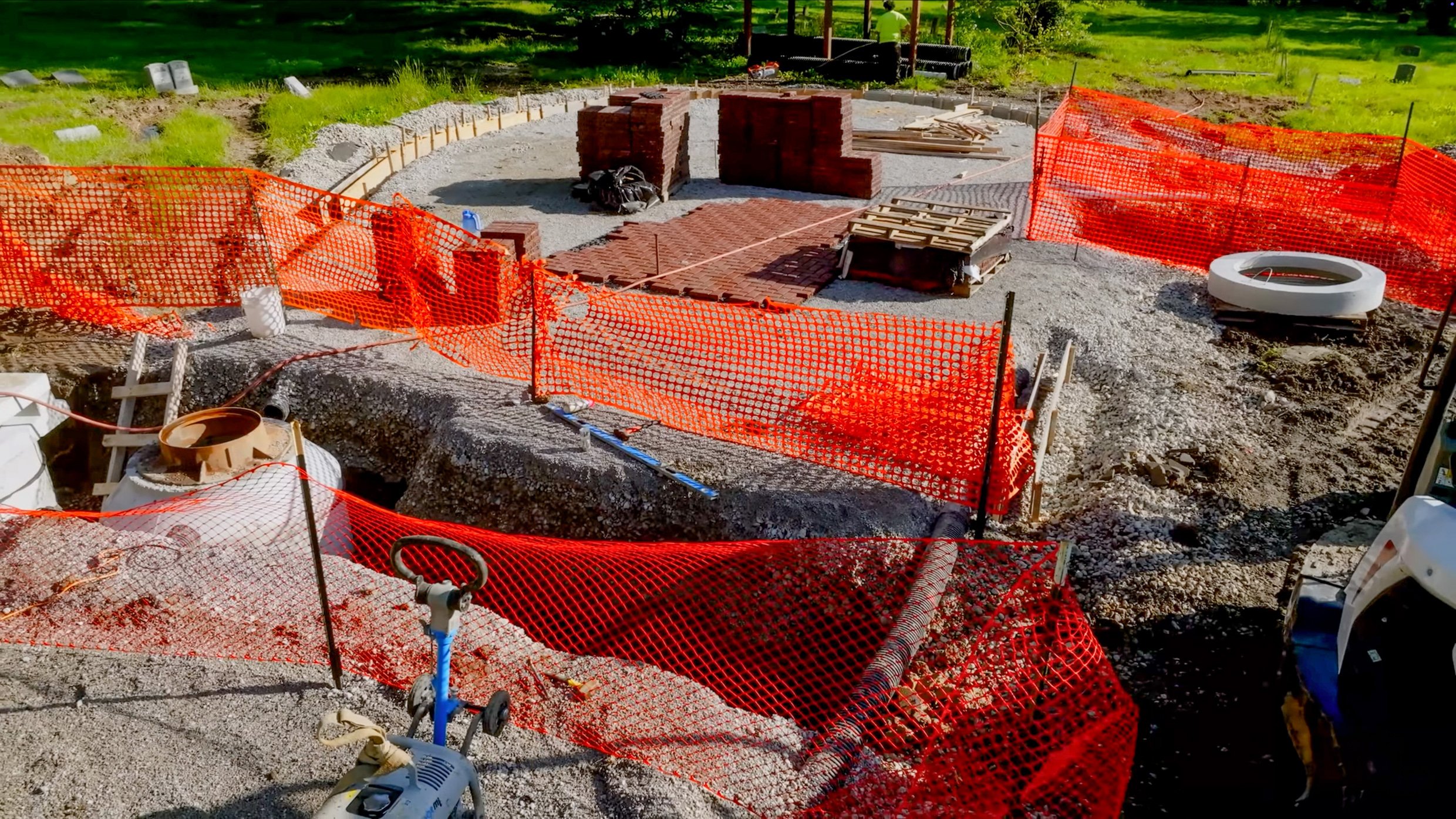
The first step began with bringing Engineers Without Borders USA on board, a humanitarian organization known for empowering communities by designing sustainable infrastructure solutions. As they joined forces with America’s Plastic Makers and the GCPA to help make this sizable and complex project a reality, it quickly became clear that creating a new primary access road would require a unique and innovative solution.
The cemetery’s needs set the bar high. For a new road to fully withstand the frequent storms and substantial rainfall, it would have to be both highly durable and permeable. Any materials used in its construction had to be capable of absorbing large amounts of water runoff while also providing unfettered access throughout the entire property. It would also need to handle both foot and vehicular traffic, resist fading from the sun’s UV rays, and remain strong year after year, no matter the intensity of the elements.
Enter Aspire.
"The permeable pavers have truly been a godsend. It is just absolutely beautiful. It's perfect for Greenwood Cemetery.”
– Raphael Morris, President, Greenwood Cemetery Preservation Association
When it came time to find the best product to rebuild Greenwood Cemetery’s primary access road, the Morrises knew that in addition to reliability and permeability, sustainability was also a non-negotiable requirement. Spending countless hours working on the neglected grounds clearing away so much litter and discarded items had brought to the forefront the importance of recycling and respecting the environment — and with a project as large and integral to the cemetery’s survival as this, finding a sustainable solution was paramount to ensuring the road’s longevity.
Aspire Pavers couldn’t have been more proud to join the coalition of partners working together to preserve the site. When its vice president Lee Martucci was first contacted about the restoration and learned of the GCPA’s need for a sustainable product, he knew right away that Aspire’s Permeable Paver System was the right solution. “As as I started learning more about the project and the history and how meaningful this was, I became very excited to be involved,” says Martucci.
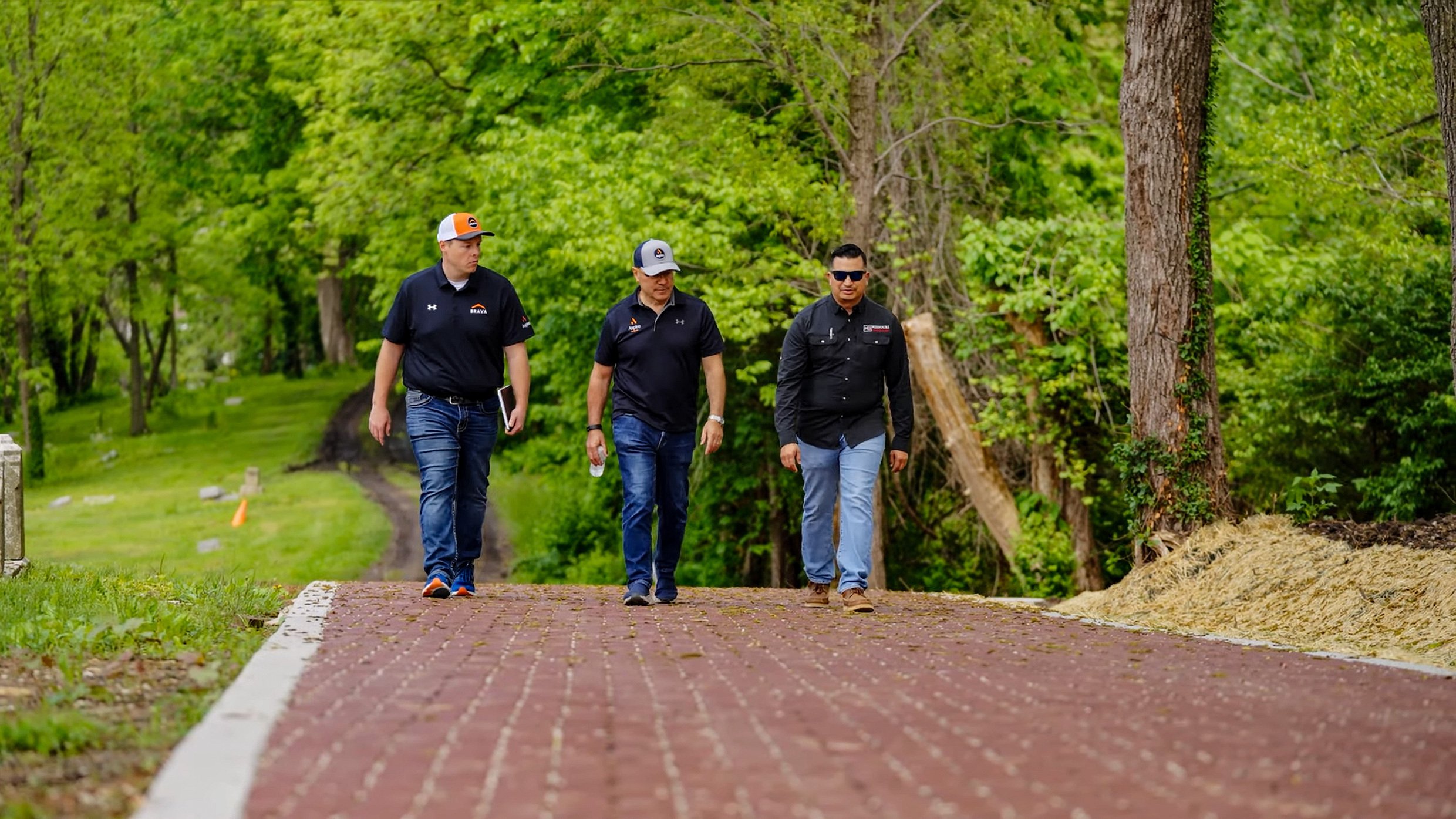
Aspire Permeable Pavers are an interlocking composite paver system that is not only beautiful and resilient, it’s also better for the environment on several fronts.
This patented paver solution reduces stormwater runoff by allowing water to pass through its surface and infiltrate the underlying soil. Unlike traditional impervious paving surfaces like concrete and asphalt, Aspire’s composite pavers help prevent flooding and, by design, are highly resistant to cracks, scratches, and even stains, which gave all the volunteers peace of mind that they wouldn’t suffer the type of damage that befell Greenwood’s original primary road.
Heavy rainfall doesn’t just contribute to making surfaces impassable; runoff is also a leading cause of pollution in our rivers, lakes, and oceans, as it carries trash and harmful chemicals along with it. The permeability of the Aspire product provides the added benefit of helping improve water quality, by filtering out harmful chemicals before they enter the groundwater.
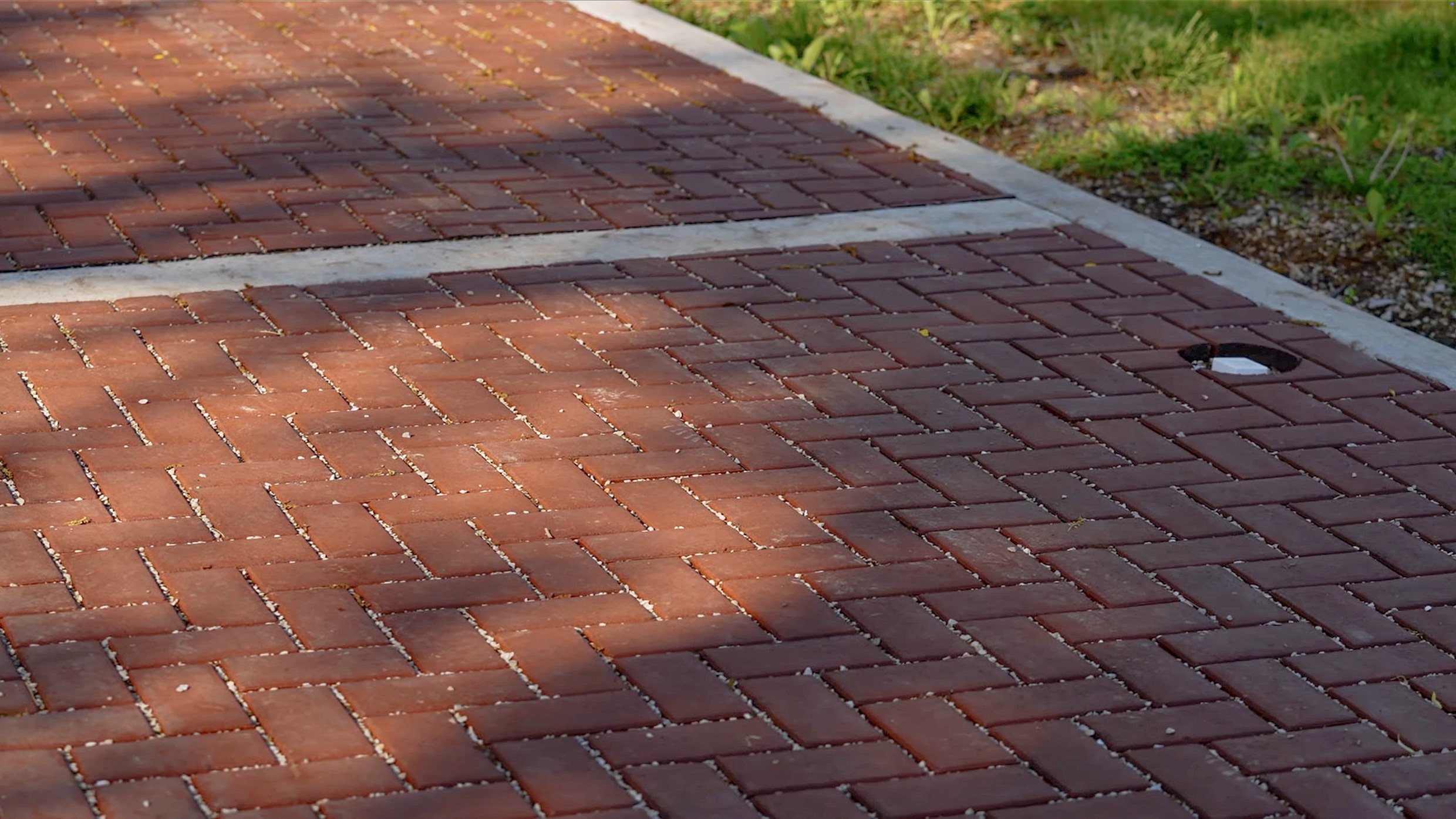
“It's very important for infrastructure to be resilient and durable. Aspire Pavers [was] absolutely the perfect product for this project because it incorporates recycled plastics and recycled tires, so it helps drainage and keeps materials out of landfills.”
— Lee Salamone, American Chemistry Council Plastics Division
What also made this innovative system the best choice for the cemetery is that Aspire’s pavers are manufactured from up to 95% recycled materials, as part of the company’s dedication to protecting and giving back to the environment. The plastic from over 6,000 recycled tires went into the Aspire permeable pavers that were used in building Greenwood’s new road — a particularly fitting result given the tremendous amount of waste, which included a rather large number of tires, that had been removed from the grounds.
With the size of the road restoration project, time was also a factor. The Morrises knew all too well how long it had been since family and friends of many of the souls buried at Greenwood had been able to visit their loved ones’ final resting places, and they weren’t inclined to make them wait all that much longer. Aspire’s Permeable Paver System installs quicker and easier — in less than 40% of the time of traditional concrete pavers. This meant the project could be completed not only in a shorter time frame but also with savings on labor costs.
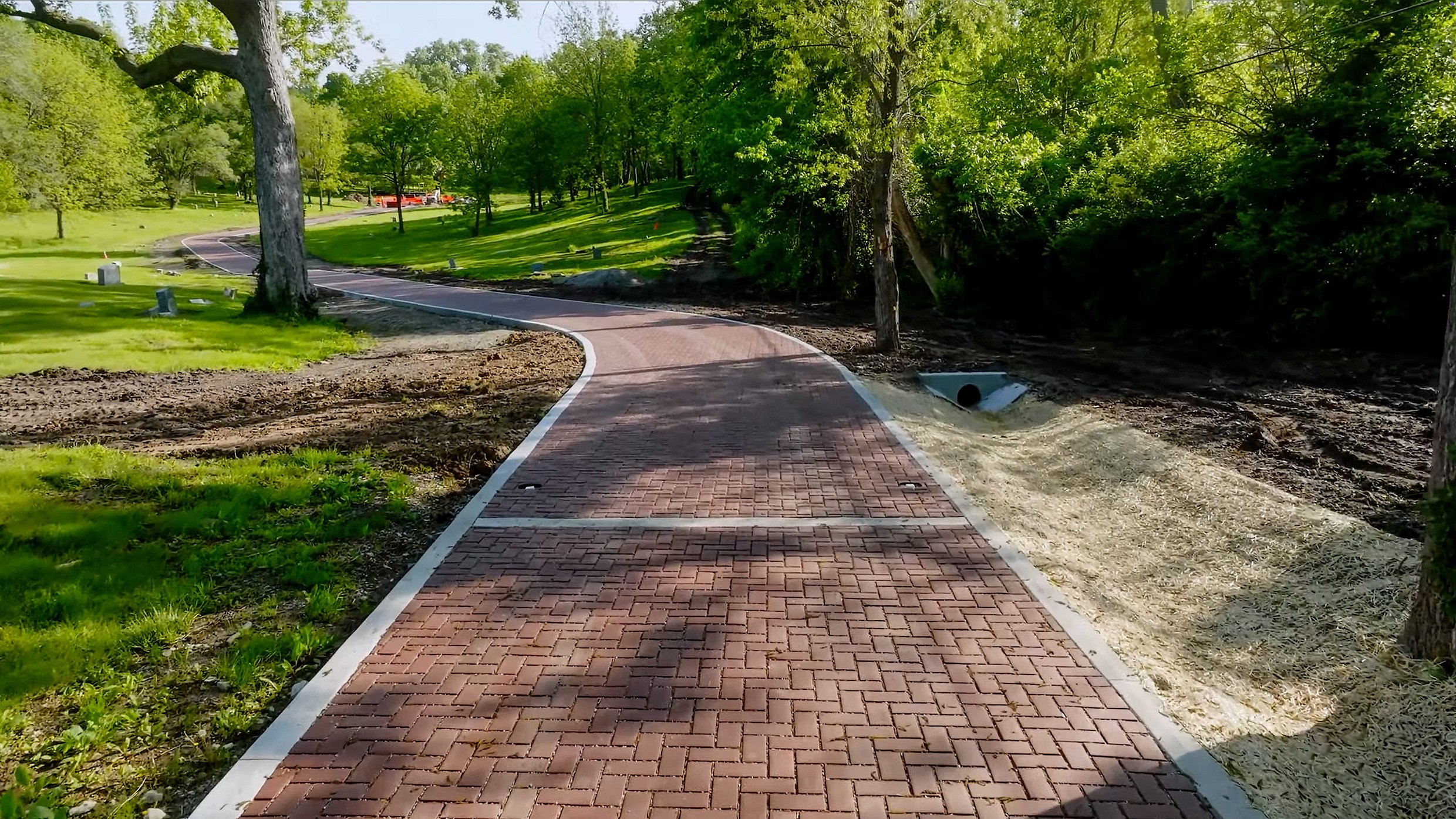
Missouri Contractors were hired for the installation. This was the first time the company had worked with Aspire Pavers, and its president & CEO Gabriel Cardenas was extremely impressed. “The easiest part of the job was installing the Aspire Pavers. They're lightweight; they're easy to carry. My guys were able to install more per day than concrete pavers, so the efficiency Aspire allows on the job site is definitely key.”
“Missouri Contractors did a great job,” adds Martucci. “Not only was this an opportunity to showcase our product, it’s a project that is good for the community. Just to hear all the stories that we heard, and the volunteers that all came together to make this happen, it’s a great project to have been part of.”
Last year, Greenwood Cemetery celebrated its 150th anniversary with its very first gala, held at the Missouri History Museum. This past May, an equally momentous and heartfelt celebration took place as volunteers, partners, and supporters of Greenwood’s primary access road restoration project came together for its ribbon-cutting ceremony.
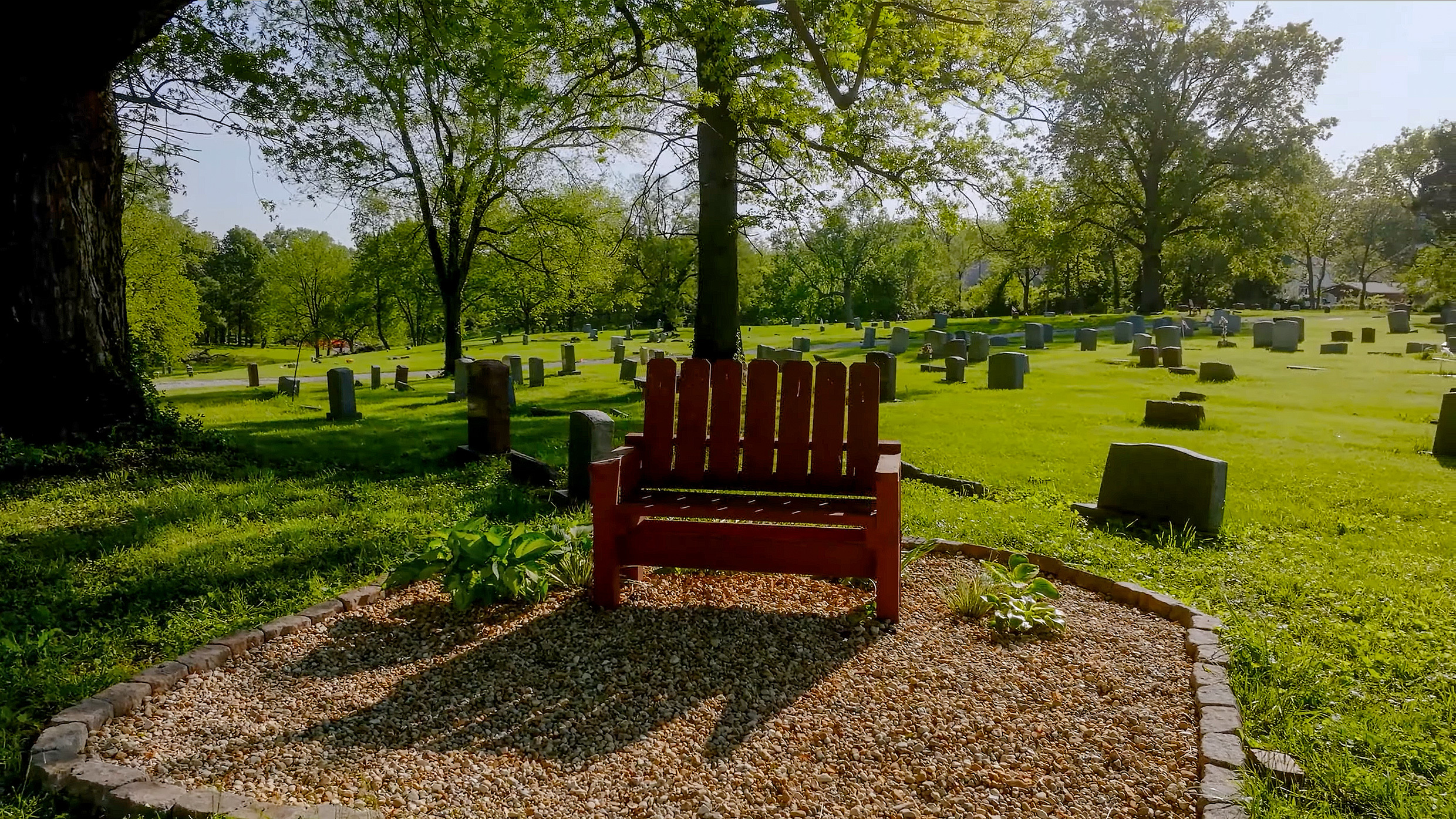
So much more than just an infrastructure upgrade, the new road is a symbol of the power of community and commitment, and the miracles that can happen when people come together with a shared, and in this case, deeply sacred, purpose.
“It’s going to be a game changer,” predicts Morris, having seen the reactions of the first to walk on the Aspire Pavers. It wasn’t all that long ago when Morris made a promise to one of Greenwood’s senior visitors after watching her traverse the cemetery’s hill with her walker; now, he marvels at watching the reality unfold as visitor after visitor is able to make their way through the cemetery with ease and reconnect with their loved ones. “In my wildest dreams, I couldn't dream that.”
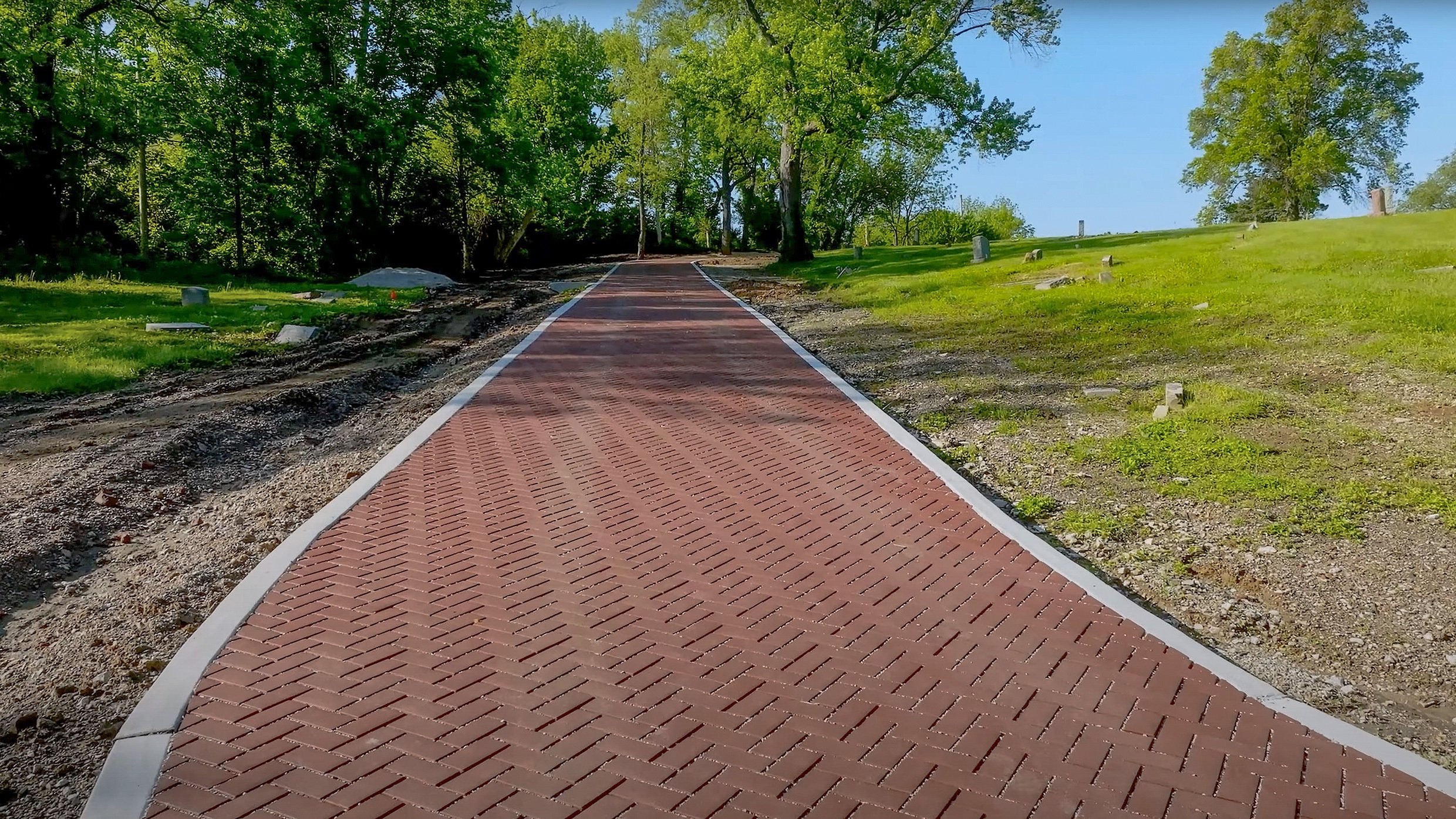
About Greenwood Cemetery
Greenwood Cemetery was the first commercial nonsectarian cemetery for African Americans in the St. Louis area, established to serve the needs of the growing black population of post-Civil War St. Louis and St. Louis County. The cemetery has been bestowed the honors of being placed on the the National Underground Railroad Network to Freedom, the National Register of Historic Places, and St. Louis County’s Historic Landmarks. Greenwood serves as a valuable educational resource and as testament to the importance of both preserving and teaching African American history.
The nonprofit Greenwood Cemetery Preservation Association is a proud recipient of the Rosa L. Parks Award for meritorious service to the community. Its mission to honor the more than 50,000 African Americans laid to rest on its grounds, to preserve the property, and to promote its historical, social, and cultural significance continues.



